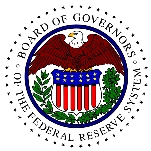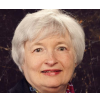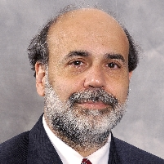The Federal Reserve (the “Fed”) is the nation’s central bank. A quasi-public institution founded by the U.S. government, the Fed wields enormous power over the financial system and the economy of the United States. Consisting of a dozen regional banks and led by a presidentially-appointed board, the Fed makes decisions that can raise or lower interest rates, increase or decrease the money supply and regulate the activities of banks and other financial institutions, among other things. Since its founding in the early 20th Century, the Fed has been scrutinized for its many controversial decisions. During its early years, it was faulted for not doing more to prevent the Great Depression of the 1930s. In 2008, the Fed has made several controversial decisions as the nation’s struggles with the greatest threat to the U.S. financial system since the Stock Market crash of 1929. The Fed has moved to prevent certain major financial institutions from going bankrupt, while allowing others to falter and be sold to rivals. Perspectives on the Federal Reserve range from helping it grow even more powerful to abolishing it altogether.
The United States’ first paper currency was known as “continentals,” printed to finance the American Revolution. The currency was printed in such quantities that it led to inflation, and the American people soon lost faith in the notes.
The Federal Reserve is a government-created banking system that wields enormous power over the financial system and economy of the United States. Sometimes thought of as a central or “national bank” (due to previous government-created institutions that held such a name), the Federal Reserve (or “Fed”) makes important decisions involving government securities and interest rates that affect private banks as well as other financial institutions on Wall Street. By affecting interest rates, the Fed can manipulate billions of dollars in business profits or losses and millions in worker employment and stock, bond or bank account values.
Neither the Federal Reserve nor its Board of Governors provides information to the federal web site, USAspending.gov, regarding contractors for goods or services. The banking system does contract out, however, for help.
Obama Proposes Expanded Fed Authority
Bernanke's Reform Agenda
The Fed: Give it More Power, or Kill it?
“From the Great Depression, to the stagflation of the seventies, to the burst of the dotcom bubble last year, every economic downturn suffered by the country over the last 80 years can be traced to Federal Reserve policy. The Fed has followed a consistent policy of flooding the economy with easy money, leading to a misallocation of resources and an artificial ‘boom’ followed by a recession or depression when the Fed-created bubble bursts.”
Paul argues that by abolishing the Fed, the U.S. will finally have “a stable currency, American exporters will no longer be held hostage to an erratic monetary policy. Stabilizing the currency will also give Americans new incentives to save as they will no longer have to fear inflation eroding their savings. Those members concerned about increasing America's exports or the low rate of savings,” says Paul, “should be enthusiastic supporters of this legislation.”
Charles S. Hamlin Aug. 10, 1914-Aug. 9, 1916
- Table of Contents
- Overview
- History
- What it Does
- Where Does the Money Go
- Controversies
- Suggested Reforms
- Comments
- Leave a comment


On February 3, 2014, Janet Yellen was sworn in as chair of the Federal Reserve. In taking over from Ben Bernanke, Yellen became the first woman to lead the institution that controls much of the financial system of the United States. She was nominated to the post on October 9, 2013 by President Barack Obama.
Yellen was born August 13, 1946, in Brooklyn, New York. She graduated from Fort Hamilton High School in Brooklyn and went on to attend Brown University. She received a B.A. in economics from that school in 1967. Yellen then moved to Yale University, from which she earned a Ph.D. in economics in 1971.
She became an assistant professor at Harvard, and taught there from 1971 to 1976. While at Harvard, one of her students was Lawrence Summers, who later became Secretary of the Treasury under President Bill Clinton and director of the National Economic Council under Obama.
Yellen then moved to a job at the Fed, becoming an economist in its division of international finance. While there, she met fellow economist George Akerlof, whom she married. Akerlof went on to win the 2001 Nobel Prize in economics, sharing it with A. Michael Spence and Joseph Stiglitz. Stiglitz was one of Yellen’s teachers at Yale.
In 1978, Yellen moved to Great Britain, teaching at the London School of Economics. She returned to the United States in 1980, accepting a post at the University of California Berkeley. Berkeley became her academic home from then on, taking leaves to accept government posts, but returning to the university when out of government. One of Yellen’s major works at Berkeley was co-authorship of a study dealing with East Germany’s integration into the German economy upon the reunification of the country. In 1993 Yellen endorsed the North American Free Trade Agreement (NAFTA).
Yellen took a leave from Berkeley in 1994, serving on the Federal Reserve System’s board of governors until 1997. At the time, her nomination was criticized by some because of Yellen’s lack of commercial banking experience. Then, Clinton appointed Yellen as chair of his Council of Economic Advisors, succeeding her old teacher Stiglitz. She served there until 1999, when she returned to California.
In 2004, Yellen was made president of the Federal Reserve Bank in San Francisco. She was one of the first to herald the coming financial crisis in 2007, urging tightening of rules for making home loans. She later acknowledged, however, that the San Francisco Fed didn’t do all it could have to ameliorate the crash, particularly in respect to Countrywide Financial’s toxic loan portfolio.
Yellen left San Francisco in 2010, when Obama nominated her to be vice chair of the Fed. She was sworn into that post in October of that year. There, she urged the Fed to maintain ultra-low interest rates and to continue bond purchases that would help spur economic growth during the slow recovery.
When Bernanke announced his departure as Fed chair, Yellen’s former student Summers was seen as a front-runner to fill the post. However, questions about Summers’ temperament persisted, and Summers withdrew from consideration and Obama nominated Yellen to the post.
Yellen and Akerlof have a son, Robert Akerlof, who has followed in his parents’ footsteps. He is an economist who teaches at the University of Warwick in Coventry, England. Yellen’s passions include stamp collecting and going on holiday with stacks of economic books for summer reading.
-Steve Straehley
To Learn More:
Janet Yellen: An Updated Reading List (by Sarah Wheaton, New York Times)
Janet Yellen Urged Glass-Steagall Repeal And Social Security Cuts, Supported NAFTA (by Zach Carter, Huffington Post)
Fed Chair Candidate Could Bring Brown to D.C. (by Brittany Nieves, Brown Daily Herald)

- Latest News
- D.C. Public Schools will Teach all Second-Graders to Ride a Bike
- New Rule in Germany Limits Sales of Sex-Themed E-Books to 10pm to 6am
- What Happened to the 6-Year-Old Tibetan Boy the Chinese Government Kidnapped 20 Years Ago?
- U.S. Ambassador to Turkey Photoshops his Hair Color to Mock Turkish Mayor
- Mystery Artist Calls Attention to Unfixed Potholes by Drawing Penises around Them
The Federal Reserve (the “Fed”) is the nation’s central bank. A quasi-public institution founded by the U.S. government, the Fed wields enormous power over the financial system and the economy of the United States. Consisting of a dozen regional banks and led by a presidentially-appointed board, the Fed makes decisions that can raise or lower interest rates, increase or decrease the money supply and regulate the activities of banks and other financial institutions, among other things. Since its founding in the early 20th Century, the Fed has been scrutinized for its many controversial decisions. During its early years, it was faulted for not doing more to prevent the Great Depression of the 1930s. In 2008, the Fed has made several controversial decisions as the nation’s struggles with the greatest threat to the U.S. financial system since the Stock Market crash of 1929. The Fed has moved to prevent certain major financial institutions from going bankrupt, while allowing others to falter and be sold to rivals. Perspectives on the Federal Reserve range from helping it grow even more powerful to abolishing it altogether.
The United States’ first paper currency was known as “continentals,” printed to finance the American Revolution. The currency was printed in such quantities that it led to inflation, and the American people soon lost faith in the notes.
The Federal Reserve is a government-created banking system that wields enormous power over the financial system and economy of the United States. Sometimes thought of as a central or “national bank” (due to previous government-created institutions that held such a name), the Federal Reserve (or “Fed”) makes important decisions involving government securities and interest rates that affect private banks as well as other financial institutions on Wall Street. By affecting interest rates, the Fed can manipulate billions of dollars in business profits or losses and millions in worker employment and stock, bond or bank account values.
Neither the Federal Reserve nor its Board of Governors provides information to the federal web site, USAspending.gov, regarding contractors for goods or services. The banking system does contract out, however, for help.
Obama Proposes Expanded Fed Authority
Bernanke's Reform Agenda
The Fed: Give it More Power, or Kill it?
“From the Great Depression, to the stagflation of the seventies, to the burst of the dotcom bubble last year, every economic downturn suffered by the country over the last 80 years can be traced to Federal Reserve policy. The Fed has followed a consistent policy of flooding the economy with easy money, leading to a misallocation of resources and an artificial ‘boom’ followed by a recession or depression when the Fed-created bubble bursts.”
Paul argues that by abolishing the Fed, the U.S. will finally have “a stable currency, American exporters will no longer be held hostage to an erratic monetary policy. Stabilizing the currency will also give Americans new incentives to save as they will no longer have to fear inflation eroding their savings. Those members concerned about increasing America's exports or the low rate of savings,” says Paul, “should be enthusiastic supporters of this legislation.”
Charles S. Hamlin Aug. 10, 1914-Aug. 9, 1916
Comments


On February 3, 2014, Janet Yellen was sworn in as chair of the Federal Reserve. In taking over from Ben Bernanke, Yellen became the first woman to lead the institution that controls much of the financial system of the United States. She was nominated to the post on October 9, 2013 by President Barack Obama.
Yellen was born August 13, 1946, in Brooklyn, New York. She graduated from Fort Hamilton High School in Brooklyn and went on to attend Brown University. She received a B.A. in economics from that school in 1967. Yellen then moved to Yale University, from which she earned a Ph.D. in economics in 1971.
She became an assistant professor at Harvard, and taught there from 1971 to 1976. While at Harvard, one of her students was Lawrence Summers, who later became Secretary of the Treasury under President Bill Clinton and director of the National Economic Council under Obama.
Yellen then moved to a job at the Fed, becoming an economist in its division of international finance. While there, she met fellow economist George Akerlof, whom she married. Akerlof went on to win the 2001 Nobel Prize in economics, sharing it with A. Michael Spence and Joseph Stiglitz. Stiglitz was one of Yellen’s teachers at Yale.
In 1978, Yellen moved to Great Britain, teaching at the London School of Economics. She returned to the United States in 1980, accepting a post at the University of California Berkeley. Berkeley became her academic home from then on, taking leaves to accept government posts, but returning to the university when out of government. One of Yellen’s major works at Berkeley was co-authorship of a study dealing with East Germany’s integration into the German economy upon the reunification of the country. In 1993 Yellen endorsed the North American Free Trade Agreement (NAFTA).
Yellen took a leave from Berkeley in 1994, serving on the Federal Reserve System’s board of governors until 1997. At the time, her nomination was criticized by some because of Yellen’s lack of commercial banking experience. Then, Clinton appointed Yellen as chair of his Council of Economic Advisors, succeeding her old teacher Stiglitz. She served there until 1999, when she returned to California.
In 2004, Yellen was made president of the Federal Reserve Bank in San Francisco. She was one of the first to herald the coming financial crisis in 2007, urging tightening of rules for making home loans. She later acknowledged, however, that the San Francisco Fed didn’t do all it could have to ameliorate the crash, particularly in respect to Countrywide Financial’s toxic loan portfolio.
Yellen left San Francisco in 2010, when Obama nominated her to be vice chair of the Fed. She was sworn into that post in October of that year. There, she urged the Fed to maintain ultra-low interest rates and to continue bond purchases that would help spur economic growth during the slow recovery.
When Bernanke announced his departure as Fed chair, Yellen’s former student Summers was seen as a front-runner to fill the post. However, questions about Summers’ temperament persisted, and Summers withdrew from consideration and Obama nominated Yellen to the post.
Yellen and Akerlof have a son, Robert Akerlof, who has followed in his parents’ footsteps. He is an economist who teaches at the University of Warwick in Coventry, England. Yellen’s passions include stamp collecting and going on holiday with stacks of economic books for summer reading.
-Steve Straehley
To Learn More:
Janet Yellen: An Updated Reading List (by Sarah Wheaton, New York Times)
Janet Yellen Urged Glass-Steagall Repeal And Social Security Cuts, Supported NAFTA (by Zach Carter, Huffington Post)
Fed Chair Candidate Could Bring Brown to D.C. (by Brittany Nieves, Brown Daily Herald)

- Latest News
- D.C. Public Schools will Teach all Second-Graders to Ride a Bike
- New Rule in Germany Limits Sales of Sex-Themed E-Books to 10pm to 6am
- What Happened to the 6-Year-Old Tibetan Boy the Chinese Government Kidnapped 20 Years Ago?
- U.S. Ambassador to Turkey Photoshops his Hair Color to Mock Turkish Mayor
- Mystery Artist Calls Attention to Unfixed Potholes by Drawing Penises around Them





Comments